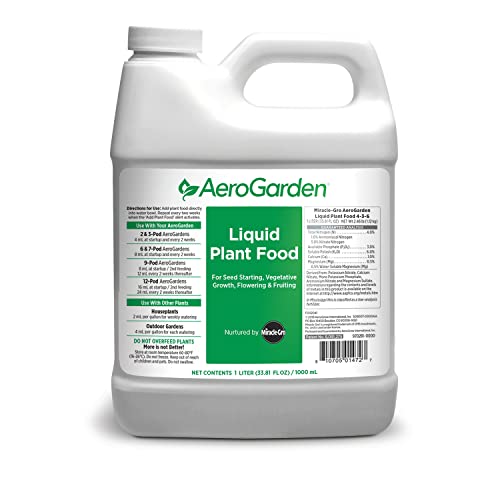All plants need a mix of nutrients to grow well and produce the fruit that we eat. Growing plants with hydroponics can be challenging if your plants don’t get the minerals they need. Most of us will only start a growing project if we can be assured that at least some of the plants we labor over will grow well!
A balanced nutrient solution for all hydroponically grown vegetables should include macro and micro-nutrients. The three base nutrients required for plants to grow well are nitrogen, potassium, and phosphorous, but for plants to develop as they should, they need 18 nutritional elements.
There are many different growing methods and, according to which method you choose, you can be guaranteed at least a small harvest if you care for the plants correctly. Hydroponics systems are a great way to grow almost any plant! The secret to this successful growing method lies in the water and nutrients used to grow the plants.
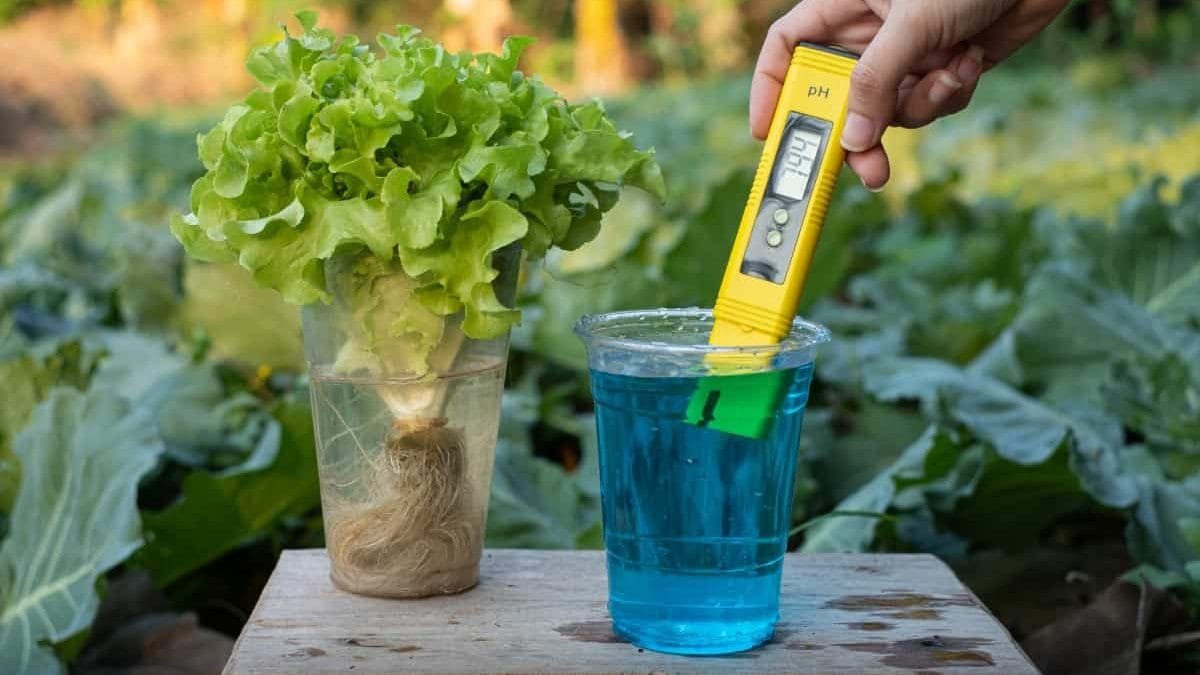
What Nutrients Do Hydroponic Plants Need?
All plants require nutrients and minerals to grow and thrive. The advantage of hydroponics is that you have control over the nutrient levels for each plant. An effective nutrient solution allows the plant to grow strong and healthy, while an ineffective solution will lead to stunted growth, drooping stems, and discolored leaves.
All plants require at least 18 nutritional elements to develop as they should. The absence of any vital nutrient and mineral will affect the plant’s development in some way. The challenge with the hydroponics method is in providing the nutrients in the right proportions through the nutrient-enriched water system.
When growing in water, the plant does not need to spread its roots as all its requirements are delivered to it in the water solution. For this reason, the water should carry everything that the plant needs.
Ordinary tap water can be used in a hydroponics growing system, but the PH level is incorrect and should be corrected by adding an acidic solution. The PH level of tap water is around 7.5 to 8.0, which is too high for any hydroponics system. The correct PH levels for a hydroponics system should be between 5.5 and 6.5.
The only way to ensure the correct nutrient levels is through regular testing of the water supplied through your system. Both of the PH and EC (Electrical Conductivity) levels in the water are easy to test using a handy water testing meter available from any hydroponics store.
- Monitor 3 parameters in water: Conductivity (TDS) level to ensure plants get a balanced feed,...
- This hydroponics meter has ATC that provides consistent reading regardless of any fluctuations...
- Combine with Bluelab meters and controllers for full indoor garden nutrients monitoring in...
The nutrient levels should be tested every ten days, while the PH should be tested every 4 to 5 days. Top up both the water and nutrients when the levels are low, generally while testing the water PH and EC levels.
A balanced nutrient solution delivered to the plant’s roots through the water allows each plant to absorb what it needs. By having the nutrients available at all times, the plant can top up on what it needs when it needs it.
If the required nutrients are not available in the water or a particular nutrient is deficient, the plant may absorb too much of a different nutrient to make up the deficit. This could lead to problems in the growth and development of the plant.
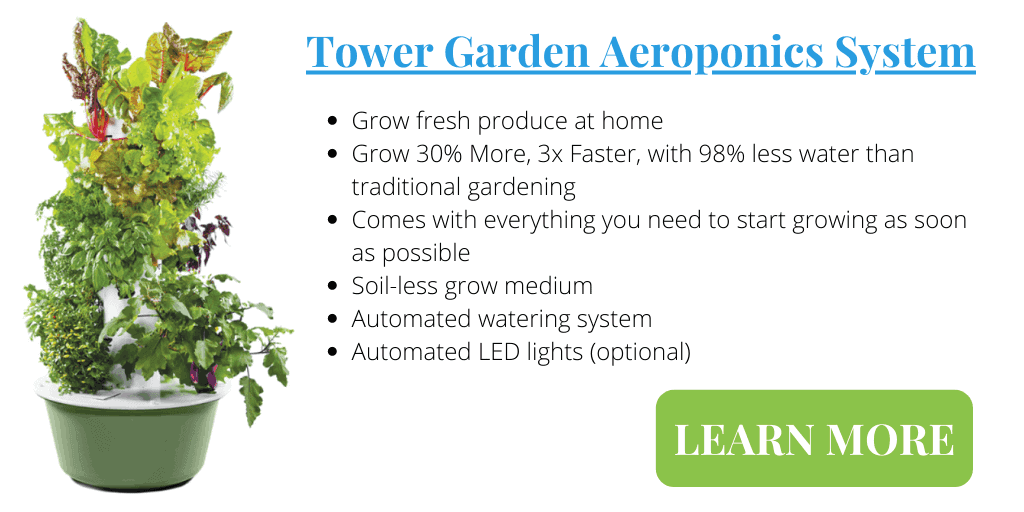
A balanced nutrient solution should contain the following macro and micro-nutrients:
| Macro-nutrients | Micro-nutrients |
| Calcium (Ca) | Boron (B) |
| Carbon (C) | Chlorine (Cl) |
| Hydrogen (H) | Cobalt (Co) |
| Magnesium (Mg) | Copper (Cu) |
| Nitrogen (N) | Iron (Fe) |
| Oxygen (O) | Manganese (Mn) |
| Phosphorus (P) | Molybdenum (Mo) |
| Potassium (K) | Sodium (Na) |
| Sulphur (S) | Zinc (Zn) |
The following beneficial elements should be included in the list. While they are not essential, they are helpful to many plants:
- Cobalt (Co)
- Nickel (Ni)
- Silica (Si)
- Selenium (Se)
While Carbon (C) and Oxygen (O) are supplied by the atmosphere, all the other essential nutritional elements are provided by the growth medium, in this case, the water transported to the plant’s roots.
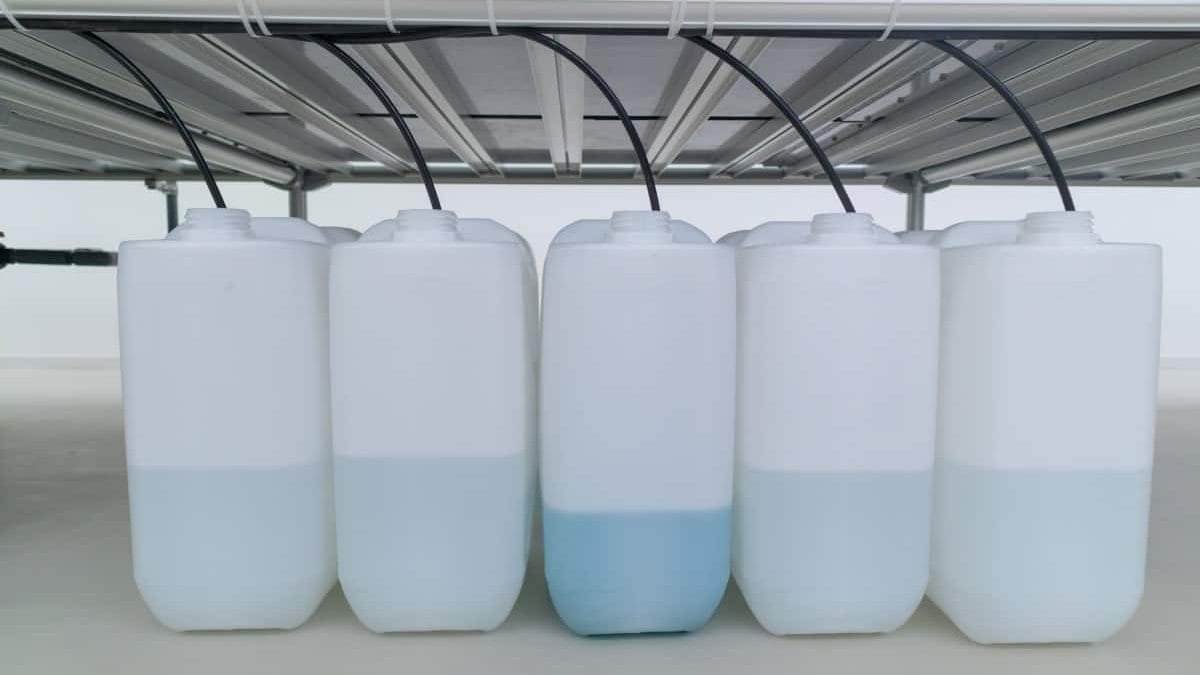
What Are The Best Hydroponic Nutrients For Vegetables?
All vegetables require different nutrients to thrive as they should. Plants that grow in soil have the same nutritional requirements as plants grown in water.
When growing in the ground, the plant’s roots will spread out to absorb what they need from where they can get it in the soil. In contrast, when growing in a hydroponics system, the water and nutrients are delivered directly to the roots enabling the plant to concentrate on producing a healthier plant.
Generally, plants have different needs according to the seasons and the climates that they are growing in. They require more nutrients during the cooler months and fewer nutrients during the hotter months.
This means that a stronger nutrient solution is needed during the winter months as the plants use less water, while a weaker solution is needed during the summer months while the plants use more water.
Vegetables have unique nutritional requirements, so the best way to ensure that each plant absorbs what they safely need is to grow plants with similar requirements in the same growing containers.
We have listed a few of the more common, easy-to-grow hydroponic vegetables below. While this is not a detailed, comprehensive list of everything that can be grown using the hydroponics method, it should give you an idea of which plants will grow well and their nutrient requirements.
We have also provided a short list of companion plants for each vegetable. Remember that companion planting in a hydroponics system is determined by the actual nutrient requirements of each plant, how much space they need for optimal growth, and the amount of sunlight and water they need.
Hydroponic Nutrients For Lettuce
Lettuce is an easy plant to grow for beginners. The most common varieties are Butterhead, Romain, and the frilly Lolo.
The PH level of the nutrient solution for lettuce is 6.4 for seedlings and 6.0 for mature plants. The nutrient solution should contain high levels of potassium, phosphorus, and nitrogen. Some lettuce can be nitrogen sensitive, so keep an eye on the tips of the lettuce leaves – if they turn brown, adjust the nitrogen in the solution.
Calcium and Magnesium sulfate can be included in the solution for lettuce. Lettuce does not need strong sunlight and will thrive under fluorescent or LED grow lights.
Lettuce grows well in any hydroponics growing system as a companion plant to any leafy vegetables and herbs. Try growing lettuce in the same nutrient solutions as:
- Spinach
- Kale
- Swiss Chard
- Endive
- Watercress
- Basil
- Mint
The best liquid hydroponic nutrients for leafy plants is the GH Flora series.
Hydroponic Nutrients For Tomatoes
Tomatoes need some support even when growing in a hydroponics system. Rig up a trellis system for the tomatoes and other vine plants to cling to. The best tomato varieties for growing hydroponically cherry and, surprisingly, beefsteak!
The PH level of the nutrient solution for tomatoes should be between 5.5 and 6.0 at all times. Tomatoes don’t need as much nitrogen as other crops. They will thrive with a solution of boron, chlorine, copper, iron manganese, molybdenum, and zinc.
Once the plant reaches about 24 inches (60 cms) in height and fruit is about (.393 – .590 inch) 1 – 1.5 cm in diameter, the plant’s requirements change, and different nutrients are needed. Extra nitrogen is required in the summer seasons due to the heat, while extra potassium is required in the fall and winter months because of the cold.
Tomatoes will grow well with any other vine plant in your hydroponics system. Always ensure that each plant has enough space to grow without crowding each other. These plants will grow well in the same nutrient solutions as tomatoes:
- Beans
- Peas
- Cucumber
- Peppers
The best hydroponic nutrients for tomatoes is Masterblend 4-18-38 Hydroponics Fertilizer 1LB. Mix 12 grams of Masterblend per 5 Gallons of water.
- Masterblend 4-18-38 Hydroponic, Tomato, Pepper, Fertilizer, 1LB by eDealzzz
Hydroponic Nutrients For Carrots
Carrots are easy to grow using specific hydroponics methods like the ebb and flow or the wick systems. A liquid nutrient solution should be sprinkled over the growing medium containing the ever-increasing carrots, but they will absorb the bulk of their nutrients from the reservoir below.
The optimum nutrient PH level for growing carrots is between 6.3 and 7.5. Carrot seedlings require a weaker solution, while mature carrots need full strength. The primary nutrient requirements are nitrogen, phosphorus, and potassium for root production.
Carrots require 12 to 16 hours of daylight every day but will grow well under lights. Don’t immerse carrots in water as they won’t thrive in very wet environments.
As carrots are a root plant, they will grow well with some vine plants like tomatoes and beans. If you have enough space, onions and leeks will grow well with carrots.
Always check the nutrient PH levels before deciding which plants to place together in the growing container.
The best hydroponics nutrients for carrots is AeroGarden Liquid Plant food.
- Liquid plant food contains a pH buffering system great for houseplants and all hydroponic...
- Indoor gardening with an AeroGarden growing system provides water and food reminders to help...
- Plant fertilizer is instantly available to plants and improves the release of critical...
Hydroponic Nutrients For Eggplant
Eggplants are one of the easiest plants to grow in any system, and they thrive in warmer temperatures of around 70 to 80 degrees Fahrenheit (21 to 26 degrees Celsius). They require around eight hours of light every day and grow well under lights in a greenhouse set up.
Eggplants require a good mix of nitrogen, phosphorus, and potassium with a nutrient PH level of 5.5 to 6.0. Ideally, growing plants should start on a balanced grow formulation and then switched to a fruiting formulation with higher potassium levels once the first fruits appear.
Plant alongside fruiting crops like melons, but provide a trellis for them to climb.
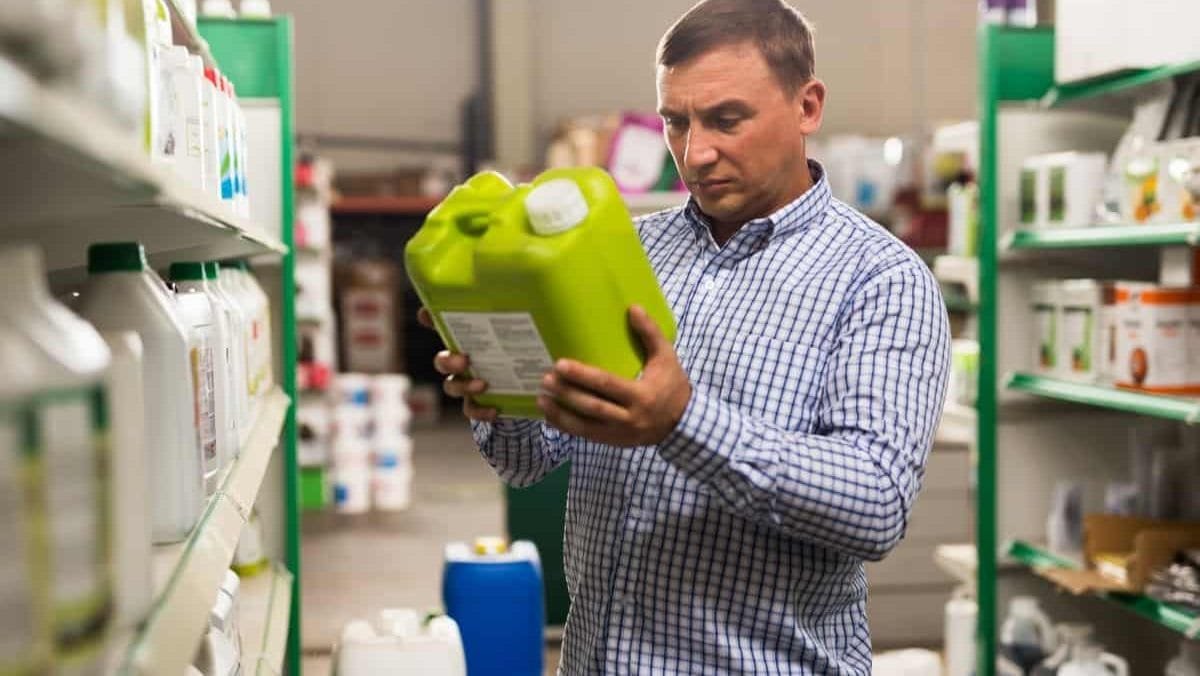
How To Choose A Nutrient Solution
A nutrient solution is effectively the food of any hydroponically grown plant, so your plant’s growth depends on the correct nutrients that it receives. A complete nutrient diet for any plant consists of the base nutrients denoted for the growth or flower stages of the plant as well as additional supplements.
Supplements can be added to the nutrients to improve deficiencies in a specific element.
The three macronutrients which form the core of any nutrient solution are determined as the N-P-K ratio:
- Nitrogen – aids plant growth and metabolism. A lack of nitrogen stunts growth and discolors leaves.
- Phosphorous – facilitates photosynthesis and stimulates the roots. Phosphorous deficiency results in no fruit, small plants, and dark tips on the leaves.
- Potassium – controls the efficient use of water, allowing the plant to grow well. Potassium protects the plant from disease, cold and drought, and regulates evapotranspiration. Browning leaves with tense edges indicate a lack of potassium.
The percentage of N-P-K in each solution will be listed on the packaging as three numbers separated by dashes, e.g., 6-5-5.
Before you choose any nutrient solution, make sure that it can be used in a hydroponics system. Regular soil-based nutrients are not suitable for hydroponics as they can alter the PH levels of the water solution.
The nutrient solutions that you use should be according to the needs of your individual vegetables. Research the correct nutrient requirements for each vegetable group and adjust the PH and EC levels according to their needs.
Liquid Vs. Powder Nutrient Solutions
Hydroponics nutrients solutions are available in two different forms – powder or liquid.
Liquid Nutrient Solutions
Liquid Nutrient Solutions are great for beginner growers or hobbyists as they are easier to use with smaller systems.
Pros Of Liquid Nutrient Solutions:
- The solution is premixed with all the required nutrients
- Prevents the incorrect nutrients from being added to the solution
- A liquid solution saves you time as you won’t need to mix it
- Sold in smaller quantities
- Fast-acting
Cons Of Liquid Nutrient Solutions:
- Can be expensive
- Liquid solutions are more volatile so handle with care!
- All liquid solutions should be used within two years of purchase
Powder Nutrient Solutions
Powder Nutrient Solutions are generally used by commercial growers as they can buy the ingredients in bulk.
Pros Of Powder Nutrient Solutions:
- Cheaper than premixed solutions as the nutrients are powder-based. A few teaspoons of powder are mixed with a gallon of water, so you only pay for the powder and not the water
- Powdered mixes are available for specific crops and are consistent until the end
- Powders last longer
Cons Of Powder Nutrient Solutions:
- Time-consuming and complicated to mix
Can I Make My Own Hydroponic Nutrients Solution?
If you are unsure of the ingredients in store-bought solutions or simply want to add supplements to the solution, you can make your own nutrient solutions specifically geared toward your growing plants.
Always research the nutrients that you will need and handle them with caution.
Here’s how to make your own hydroponic nutrient solution:
- Buy the correct nutrients that you need for the base of your solution.
- Ammonium phosphate
- Magnesium sulfate (or carbonate)
- Potassium nitrate
- Calcium nitrate (or carbonate)
- Add two teaspoons of nutrients to a gallon (4.5 liters) of water.
- Stir the mixture very well to combine all the nutrient powders.
- Add one teaspoon of Epsom salts to every gallon of water.
- Mix well and use as required.
Conclusion
Growing plants successfully requires the correct climate, a great growing environment, and nutrient adjustments according to the climate and the growing season.
Hydroponics allows you to grow most plants in a controlled environment and feed each plant what it needs to thrive! By adding the correct nutrients, you are ensuring strong, healthy plant production all year round.




